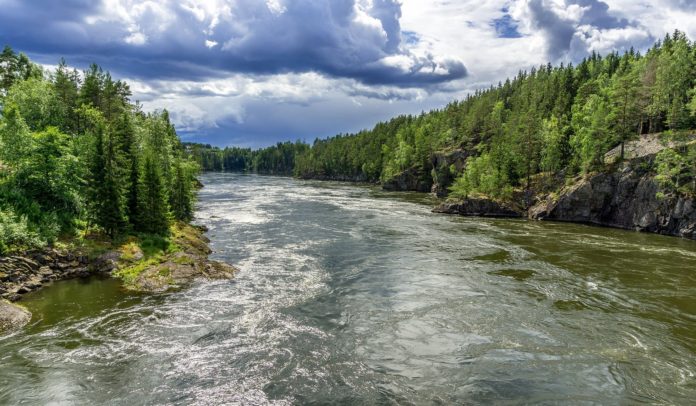From Røros in central Norway to the Oslfjord, Norway’s Glomma river has shaped the landscape and society for hundreds of years.
Once you’ve been living in Norway for a while, the name ‘Glomma’ will become familiar. Even if you’ve never seen the river, the Glomma is well known as Norway’s longest river.
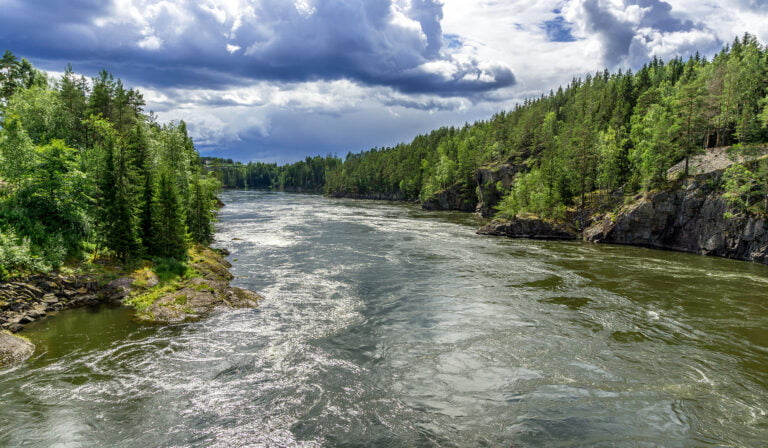
So much so, that it was one of the questions on my citizenship exam last year! Despite knowing its status as the longest river, I was still surprised to discover the river on a recent trip to Sarpsborg.
“Wait, isn’t the Glomma the river in Røros?” I said to my friend. A quick check on Google Maps and I realised the true size of this waterway.
Introducing the Glomma
In a country with so many mountains and valleys, perhaps it’s no surprising that some of Norway’s rivers are very long indeed. But none more so than the Glomma.
With a total length of 621 km (386 miles), the Glomma’s drainage basin covers an astonishing 13% of Norway’s surface area. It runs from lake Aursund near Røros in central Norway all the way down to the Oslofjord near Fredrikstad. The Glomma is at its strongest south of Lake Mjøsa.
The river’s location in rich forested areas led to significant industry development over the years. It was originally used for log-floating and eventually for various other industries including significant hydropower development.
Notable places along the Glomma
Here are some of the notable places along the meandering 621 km route of the Glomma.
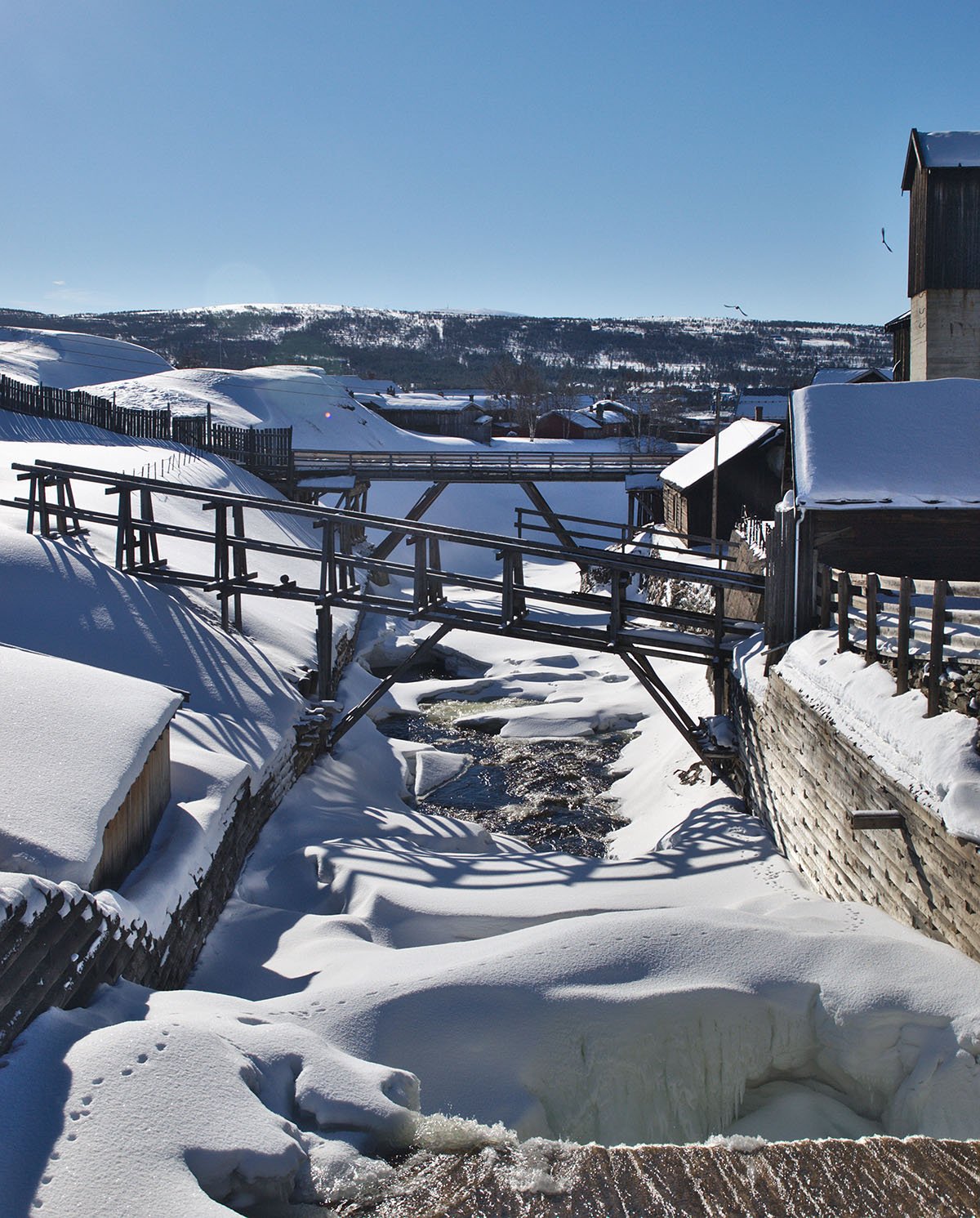
Røros: This charming former copper mining town is a true star of central Norway. Locals still live and work in the 17th and 18th century timber buildings within the UNESCO World Heritage site.
Elverum: East of Hamar, Elverum is home to the Norwegian forestry museum and the Glomdal museum, both telling the story of the river’s importance to the area especially in terms of forestry and fishing.
Kongsvinger: As it gets close to the Swedish border, the Glomma takes a westerly turn at Kongsvinger. The historic fortress with star-shaped defensive walls stands proudly above the river.
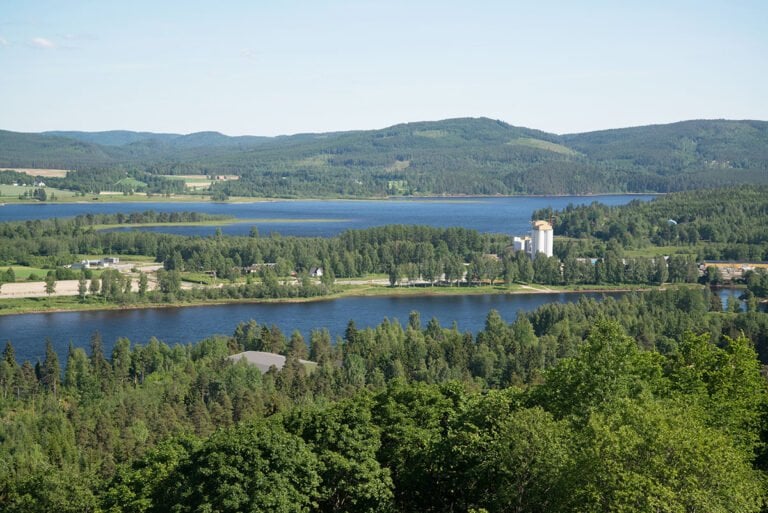
Sarpsborg: As the river approaches the Oslofjord, the Glomma passes through towns that owe their growth to it. This includes Sarpsborg, where the power of Sarp Falls has been harnessed for mills and hydropower for years.
Fredrikstad: Founded in 1567 by King Frederick II, Fredrikstad is known for Northern Europe’s best preserved fortified town on the eastern side of the river. The modern town grew up on the western side. Small ferries move locals between them to this day.
Fishing in the Glomma
Many places along the Glomma are popular with anglers. Fishing in Norway is governed by strict rules and local licensing regulations are usually in place. Salmon, trout, grayling, mountain whitefish and pike are among the common species.
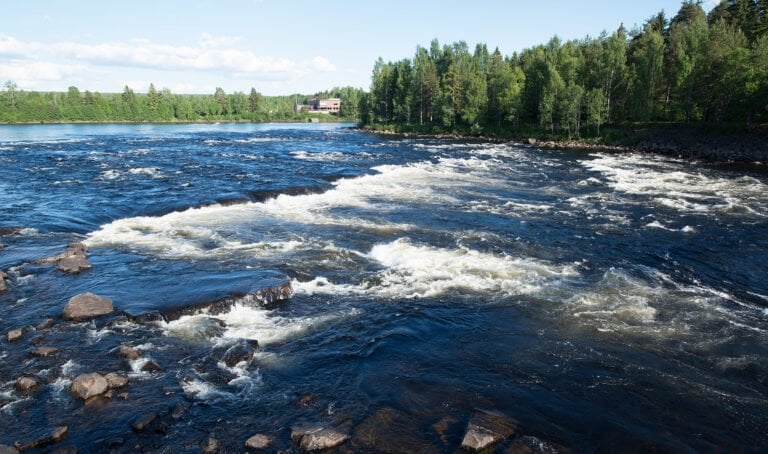
Visitors are usually allowed to fish, but will have to obtain a license first. Given the size of the Glomma, it’s best to contact the local tourist office to enquire on the local rules first.
For example, in Elverum, fishing in the Glomma is allowed all year around (with a permit) although trout is protected during the fall.
Ice fishing opportunities often exist in the late winter / early spring. Fly fishing usually begins around Mid-June and is best on warm days in September and October.
Credit: Source link

















